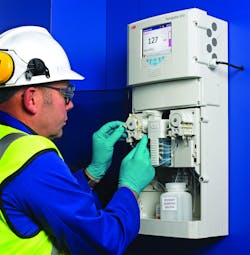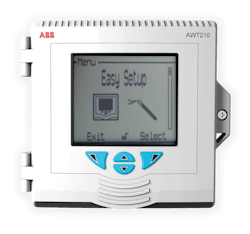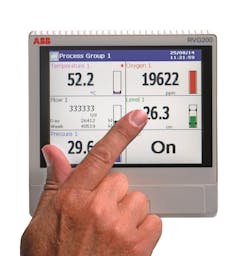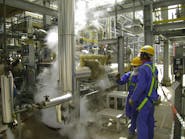Using digital instrumentation to transition to a digital-enabled plant
With the world increasingly going digital, it is no surprise that industry is rapidly adopting this game-changing technology. As the frontline of any industrial process, instrumentation provides an invaluable starting point for gauging performance, safety and compliance, as well as identifying areas for potential improvements.
Offering greater accuracy, range and depth of information, digital technology can provide operators and process engineers with a timely and detailed picture of both operating conditions and the status of their measurement equipment. This article looks at the benefits delivered by the latest generation of digital instruments and explains how to make the transition to a digital-enabled plant.
Most instruments make a measurement, amplify it, convert it and then transmit it. Because data is sent as a stream of discrete ones and zeros, a digital instrument will always provide an accurate representation of process values. By contrast, analog instruments represent data through a varying electrical signal. One of the problems with this is scaling, whereby a mismatch can occur between the transmitting range of an instrument and the input scaling range of the receiving instrument. This can create incorrect readings, as well as send operators looking for measurements that are unaccounted for.
Another advantage of digital is the ability to combine multiple different values into the signal. Unlike analog methods, which can only send one signal at a time, digital allows additional measurements to be sent along with the primary measurement, such as density, temperature or pressure.
Examples include chemical analyzers and level detectors that can also provide temperature sensing, helping operators make better process control decisions. Flowmeters that measure conductivity in the pipe can detect changes that flag issues such as increasing contamination, highlighting the potential need for a change in chemical dosing to counteract it. Air bubbles caused by pump cavitation can also be detected by flowmeters, indicating that preventive maintenance is required.
Ease of use is another benefit of digital instruments. Unlike analog meters, which can be difficult to interpret quickly and accurately, digital information can be presented on large touch-screen displays, enabling operators to drill down for further information if necessary. Smartphones and tablets can also be used to remotely interact with plant equipment and display analytical data, which is particularly useful when an instrument is situated in a hard-to-reach location or when engineering resources are at a premium.
Digital diagnostics
Digital instrumentation also makes life easier when things go wrong or processes stray from their limits. Before digital instruments were available, the most an operator could hope for to indicate a problem was a fault warning light or a reading that was out of the ordinary. On a 4-20 mA device, for example, a low or high current signal outside of the normal range would indicate a problem but would not necessarily provide the detail needed to pinpoint its root cause.Digital fills this gap. Depending on the solution used — whether it is adding HART to a 4-20 mA device or opting for a fully digitized system — it is now possible to obtain in-depth information on instrument performance, including any factors that are causing a device to deviate from its normal calibrated settings or that might be causing faulty measurement signals.
Many modern instruments offer remote access to diagnostics and configuration changes. This means, if there are any problems with power management or a sensor element or cable is broken, exact information on the time of the event and the exact location of the affected device can be obtained — either locally at the device itself or by relaying the data to a centralized control system. This cuts maintenance time and costs, as engineers are only deployed as needed, and ensures that any problems in the process being measured are resolved before they can escalate.
Trends and process histories are also much easier to access and analyze when they are based on a stream of easily storable and accessible data that can be analyzed and interpreted and turned into readily interpretable graphical formats. Engineers can see the precise time that an event occurred, as well as how changes in parameters may have led to it.
This also helps with the shortage of skilled operators. Process instrumentation that can provide analysis as well as detailed readings can help young or inexperienced plant personnel who may not have the skills of their more experienced colleagues. In many cases, technologies used in everyday life are being used for industrial purposes, offering a familiar interface. One example of this is the use of QR codes to display device maintenance and operating conditions. By scanning the QR code with a smartphone, an engineer can relay data about the instrument to its manufacturer, who can offer remote assistance.
The concept of remote support is being taken to new heights by forward-thinking instrumentation vendors using the power of digitalization to maximize the uptime of their equipment.Many vendors now offer condition monitoring tools that confirm the health of measurement devices and streamline their servicing. Features such as automated testing of devices improves the quality and consistency of measurements, giving better results, while the ability to relay data to a manufacturer’s service experts can help ensure high availability and reliability of equipment, low unplanned downtime and reduced operating and maintenance costs.
When used to their full extent, the expanded capabilities offered by digital instruments can enable maintenance regimes to shift from a time-based to condition-based frequency, with parts being replaced as necessary, according to their effect on performance.
Furthermore, by guarding against the risk of faulty measurement or non-availability caused by a malfunction, it is also possible to protect against potential penalties caused by noncompliance with regulatory requirements around areas such as safety or discharges to the environment.
Taking the wider view
Although digital instrumentation brings great benefits to the management and monitoring of individual machines or items in process plants, it offers even greater advantages if seen as part of a more strategic, companywide process of digitalization. The rise of web-connected devices allows companies to benchmark their various facilities against each other to tease out best practice.
In this way, data can be used not only to maximize process performance but also to address other key areas, including improving customer satisfaction, determining the most effective allocation of capital and enabling better decision-making to improve day-to-day business, financial and operational activities.With the growing capabilities of artificial intelligence and machine learning, the traditional challenge of data — how it is analyzed, processed and shared — is also increasingly addressed. The wealth of data produced by digital and connected instruments across a company can be collected and analyzed by software solutions that share inputs from sensors, analyzers and control systems. The result is a better overall view of what is happening, helping operations achieve tighter integration across functions.
Another function that can benefit from data analysis is workforce management. Data from instruments can be used to create predictive maintenance routines based on actual performance, enabling employees to be deployed more effectively — with the knowledge and tools needed to address any potential issues.
Building a plant’s digital future
Many companies are daunted by the idea of digitalizing their factory or plant. But it does not need to be an expensive “big bang” project that transforms the company in one go. A good place to start is by considering single processes that can be easily digitized or connected and can bring immediate benefits.
First, look for ways of getting more from the instruments already installed on the site. In many cases, operators tend to purchase instruments for their primary purpose without realizing the raft of additional data that can be extracted. An example is Coriolis flowmeters. In addition to measuring flow, these flowmeters also measure density, concentration and temperature, providing valuable data over and above just a flow reading that can potentially be utilized to help refine process performance.Also, consider plant instrumentation that includes HART (highway addressable remote transducer) capabilities, where a digital signal is superimposed onto an analog signal. This is an ideal halfway point for organizations that want more from their instruments without a complete upgrade to a digital system.
In assessing which processes to digitize, look at existing procedures and processes that are used to record data for that process. Do they generate a lot of manual paperwork? What data is recorded, and could it be done more automatically? What data is useful, and which is recorded routinely but to little effect?
Get managers and process staff on board and find out what data they need, where the issues are, or how they could use more detailed data or more insight into process behavior to solve specific problems.
This does not need to have a big impact on the site’s IT department. Adopting scalable, cloud-based data management systems that meet the needs of the application can avoid tying up internal IT resources or personnel.
Cloud-based infrastructure helps people and systems access the data they need. The data can come from inputs from process-line instrumentation and signals directed to a variety of control equipment — programmable logic controller (PLC), supervisory control and data acquisition (SCADA), and distributed control systems (DCS).
Conclusion
Digitalization needs to be part of a culture of continuous improvement, taking staff suggestions of how processes could be digitized and linked to provide better, more timely information. But, don’t lose sight of the ultimate goal: a fully connected company that uses systematic, advanced data analysis to improve efficiency, satisfy customers and ultimately expand its business.
David Lincoln is a digital lead for ABB Measurement & Analytics.






